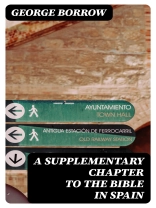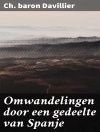In 'A Supplementary Chapter to the Bible in Spain, ’ George Borrow extends his remarkable exploration of the cultural and religious landscape of Spain, painting a vivid portrait of the nation’s spiritual undercurrents through his characteristic narrative style that melds travel literature with an ethnographic approach. Borrow’s keen observations of the Spanish populace, particularly the marginalized communities of the time, offer readers an intimate glimpse into the complexities of faith and identity. This book serves not only as a companion piece to his earlier work but also as an insightful commentary on the impact of the Bible in a land shaped by both Catholicism and the remnants of its Protestant history. George Borrow (1803-1881), a renowned traveler, linguist, and author, was deeply influenced by his own experiences of religious fervor and cultural encounters during his time in Spain. His fluency in Spanish and insights into the local customs and beliefs allowed him to navigate the often-complicated interface between the diverse religious traditions that coexisted in the region. Borrow’s passion for the search of truth through faith and his appreciation for cross-cultural dialogue imbue his writing with authenticity and fervor. This book is highly recommended for readers interested in religious studies, cultural history, or the intricacies of 19th-century travel narratives. Borrow’s unique voice and immersive storytelling will transport you into the heart of a nation grappling with its multifaceted identity, making 'A Supplementary Chapter to the Bible in Spain’ a must-read for those seeking to understand the intersection of faith, culture, and history.
O autorze
George Borrow (1803-1881) was a British author known for his works of travel and adventure, drawn from his own experiences living among the Romani people and his extensive travels throughout Europe. His writing style is characterized by a blend of ethnographic observation and romanticized narrative, often reflecting his own liberal and somewhat unconventional views for the time. Borrow’s most famous work is arguably 'The Bible in Spain’ (1842), where he recounts his endeavors as an agent of the British and Foreign Bible Society attempting to distribute Protestant literature in Catholic Spain. 'A Supplementary Chapter to the Bible in Spain’ elaborates further on these adventures, serving as an addendum to the original narrative. His other notable works include 'Lavengro’ (1851) and 'The Romany Rye’ (1857), both semi-autobiographical novels that document the life and language of the Romani people with whom he became closely acquainted. Borrow’s literary contributions extend beyond storytelling; he had a profound interest in language and translated numerous works, including those from the Romani. Despite his deep immersion in other cultures and his efforts to share these experiences with a wider audience, George Borrow’s popularity waned after his death. However, his works have continued to receive scholarly attention for their depiction of 19th-century social landscapes and linguistic studies.












